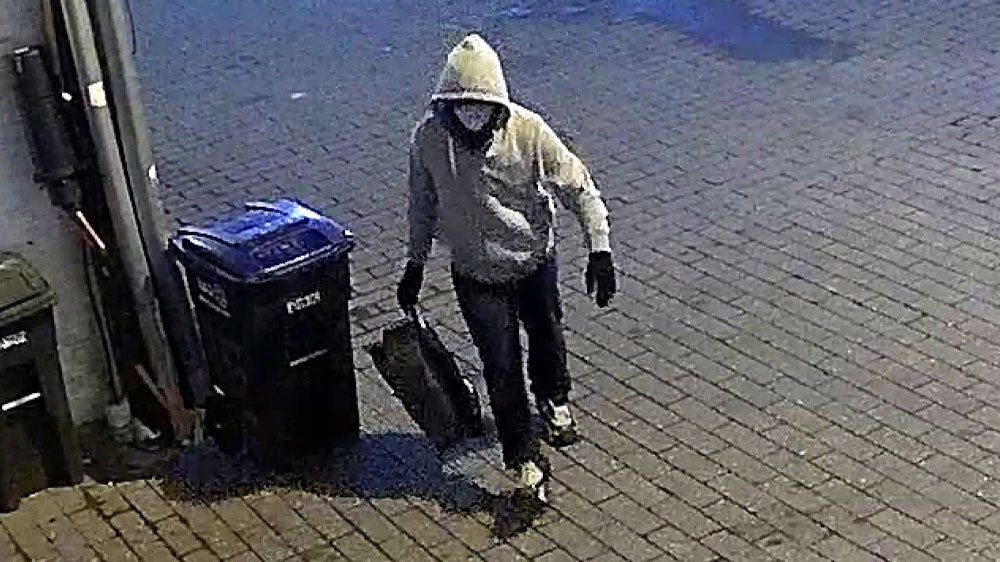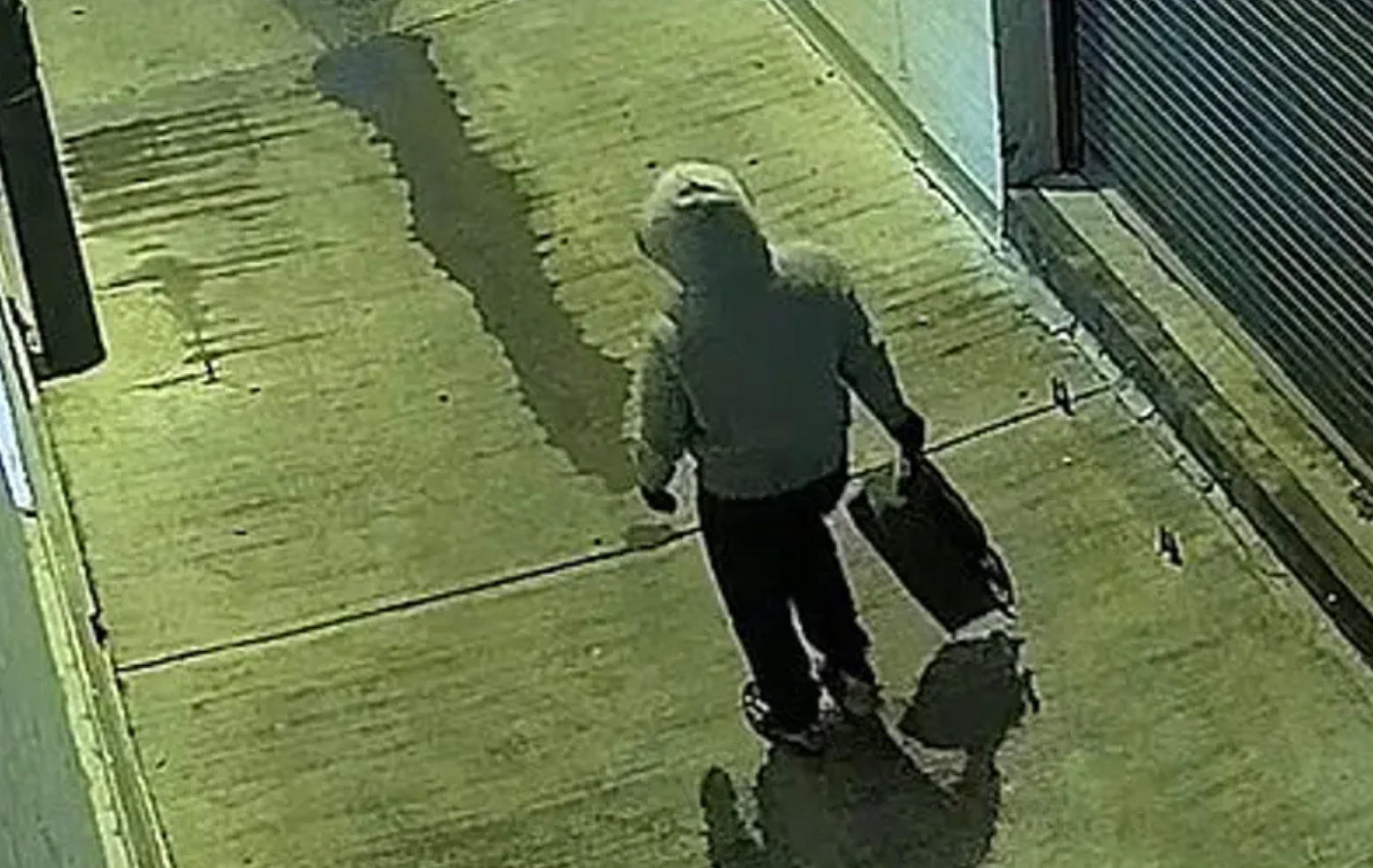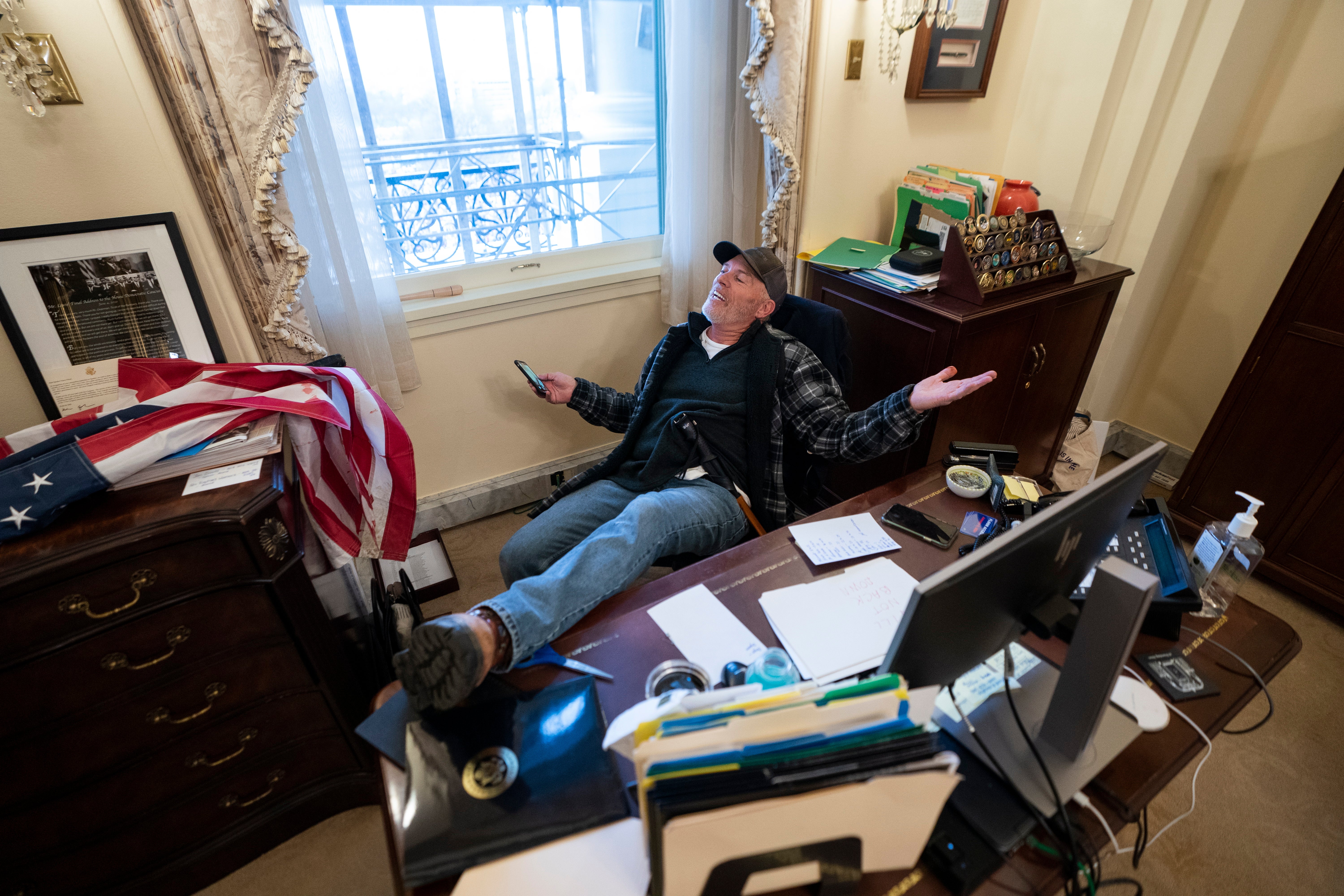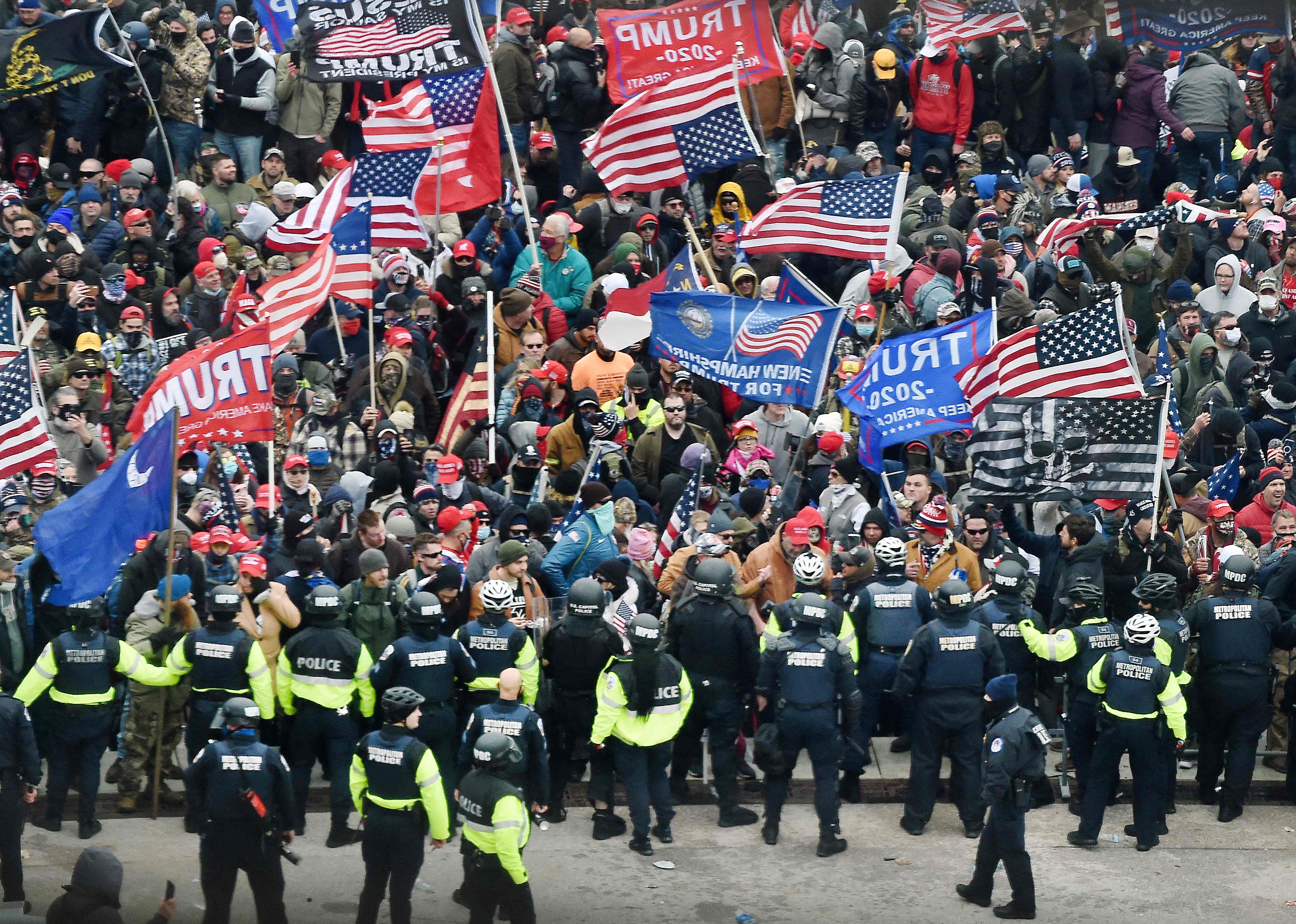Panic buttons, pipe bombers and insider info: The unanswered questions about the Capitol attack
The January 6 committee and federal law enforcement are still working to solve the most pressing mysteries from that day

Your support helps us to tell the story
This election is still a dead heat, according to most polls. In a fight with such wafer-thin margins, we need reporters on the ground talking to the people Trump and Harris are courting. Your support allows us to keep sending journalists to the story.
The Independent is trusted by 27 million Americans from across the entire political spectrum every month. Unlike many other quality news outlets, we choose not to lock you out of our reporting and analysis with paywalls. But quality journalism must still be paid for.
Help us keep bring these critical stories to light. Your support makes all the difference.
One year after thousands of Trump supporters tore through the US Capitol, the House select committee investigating the attack is still searching for answers to many questions about that day.
As the committee resumes its work this month following a holiday break for Christmas and the new year, lawmakers are set to continue their efforts to pull back the wool and learn the truth to some of the most pertinent questions about January 6, while other answers remain the target of US law enforcement.
The answer to one of those questions, and perhaps the most pertinent to 2022 and beyond, could very well be determined by the committee itself: Will Donald Trump face any concrete consequences, beyond his second impeachment by the House, for the actions of his supporters?
Rep Bennie Thompson, chair of the House select committee investigating the riot and the role allies of Mr Trump played in trying to overturn the election results, has vowed that any evidence of criminal activity uncovered by his team will be sent to the Justice Department. But it’s unclear if that will lead to charges for Mr Trump himself, who told his supporters to “fight” on January 6 from a rally outside the White House minutes before the attack took place.
A second push to hold Mr Trump personally liable for the attack is being made in the civil court system, where two members of Congress (Mr Thompson and Rep Eric Swalwell), as well as a members of the Capitol Police, are seeking to hold Mr Trump liable for damages.
The former president has thus far suffered little politically for his role in the events of January 6, as he remains the likely favourite for the GOP presidential nomination in 2024.
Let’s take a look at some other mysteries still unsolved one year after the storming of the Capitol:
Who tried to bomb the DNC and RNC?
Perhaps the most worrying aspect of the ongoing attempts to hold those who took part in January 6 accountable is the failure (so far) of federal authorities and private amateur investigators to identify a suspect in the attempted bombings of the Republican Party and Democratic Party headquarters in Washington DC.
Video surveillance footage revealed that a heavily disguised suspect left two pipe bombs at the Capitol Hill neighbourhood headquarters of the US’s two major political parties, with just 45 minutes elapsing over the course of their 5 January evening journey to place the two devices.
The case has gone without major developments for months. FBI officials are offering a $100,000 reward for information leading to the unknown person’s capture.
Though the devices did not explode or cause any injuries, they were nevertheless credited with drawing federal and local law enforcement responses to two scenes around the Capitol over the course of January 6, distracting from the response to the violence.
"The lack of any arrests his point should not be interpreted as ‘this is not a priority.’ No case in the FBI is closed until there’s a reason to close it," a retired FBI agent told The Independent in an interview about this investigation. "In this case, it would be the arrest of the person who placed the bombs. So it’s going to remain open and it’s going to remain active until the person is caught and brought to justice."

What happened to Rep Ayanna Pressley’s panic button?
Numerous offices for members of Congress across the Capitol Hill complex have “panic buttons” installed that allow security personnel to be summoned quickly in the event of an emergency. Not all offices have the devices, but staff for Massachusetts Rep Ayanna Pressley told The Hill that they had tested the devices in her DC office before.
As the events of January 6 unfolded, however, her staff quickly learned that those buttons had been disabled, or “torn out”, as one of Ms Pressley’s aides described to a Boston-area news station last January.
“Every panic button in my office had been torn out — the whole unit,” said Sarah Groh, the congresswoman’s chief of staff.

Another congresswoman, Rep Mary Gay Scanlon, would later report that her buttons were not working at the time either.
The issue was taken up for investigation by Capitol Police, and was still being probed as late as April of 2021, when Ms Pressley’s office issued the following statement: “The matter has been raised with the relevant agencies and is currently under investigation. The safety of the Congresswoman, her family and our staff remain our top priority and at the direction of the Congresswoman, the Sergeant at Arms oversaw the installation of new duress buttons throughout the office following the attack.”
The Independent reached out to Ms Pressley’s office with requests for an update on this investigation, and received the same comment regarding the probe being ongoing.
Who, if anyone, on Capitol Hill knew that rioters planned to storm the building?
The question of insider information has been the most pernicious question on Capitol Hill since the riot, as no other unanswered mystery relating to January 6 has so eroded the trust between members of Congress in an already divisive environment.
One House staffer told The Independent of Capitol Hill after the riot: “You could feel tension with people who you do not know. People didn’t feel like they were all there for the same reason anymore, which used to unite Congressional staff, regardless of party. That’s also very true on the member level.”
Accusations that some GOP members of the House may have given “tours” of the Capitol ahead of time to Trump supporters who were hours later present for the attack were first raised by Rep Mikie Sherrill, a New Jersey Democrat.
Ms Sherrill said in the days after the riot that on 5 January she witnessed “members of Congress who had groups coming through the Capitol” conducting “a reconnaissance for the next day.”

Dozens of Democratic House members would then author a letter demanding that law enforcement investigate “suspicious behavior and access given to visitors to the Capitol Complex” ahead of the attack.
Few developments have been made on that front so far, but last year the Atlanta Journal-Constitution reported that cellphone records obtained by the FBI showed contacts between members of Congress and some Trump supporters who stormed the Capitol.
No members of Congress have yet been accused of committing any crimes, but Rep Lauren Boebert faced calls for her resignation for tweeting that Speaker Nancy Pelosi had been removed from the House chamber by security as the riot unfolded.
Was there coordination between rally organisers and rioters with plans to storm the Capitol?
Two rallies occurred in Washington, DC on the day of the Capitol attack: One coordinated with the president’s closest allies directly outside of the White House on the Ellipse, and another further away outside of the US Capitol itself.
If either or both of those groups’ leadership teams were in contact with any of the individuals or groups involved in the more serious events of January 6, it could spell serious legal trouble for the rally organisers and major political headaches for Republicans, who would no longer have room to deny that the rioters were not inspired by the president’s actions or rhetoric.

It would also be a particularly troubling development for the GOP House caucus given that at least one member was reportedly in direct contact with organisers of the “Stop the Steal” rally which took place on the Capitol grounds.
Ali Alexander, the right-wing activist responsible for planning the Capitol Hill rally, was among many subpoenaed by the January 6 committee and denied any connection to the riot itself in prepared remarks to the lawmakers.
“I had nothing to do with any violence or lawbreaking that happened on January 6,” said Mr Alexander, who added: “I had nothing to do with the planning. I had nothing to do with the preparation. And I had nothing to do with the execution. Any suggestion on the contrary is factually false. Anyone who suggests I had anything to do with the unlawful activities on January 6 is wrong. They’re either mistaken or lying.”
Subscribe to Independent Premium to bookmark this article
Want to bookmark your favourite articles and stories to read or reference later? Start your Independent Premium subscription today.



Join our commenting forum
Join thought-provoking conversations, follow other Independent readers and see their replies
Comments